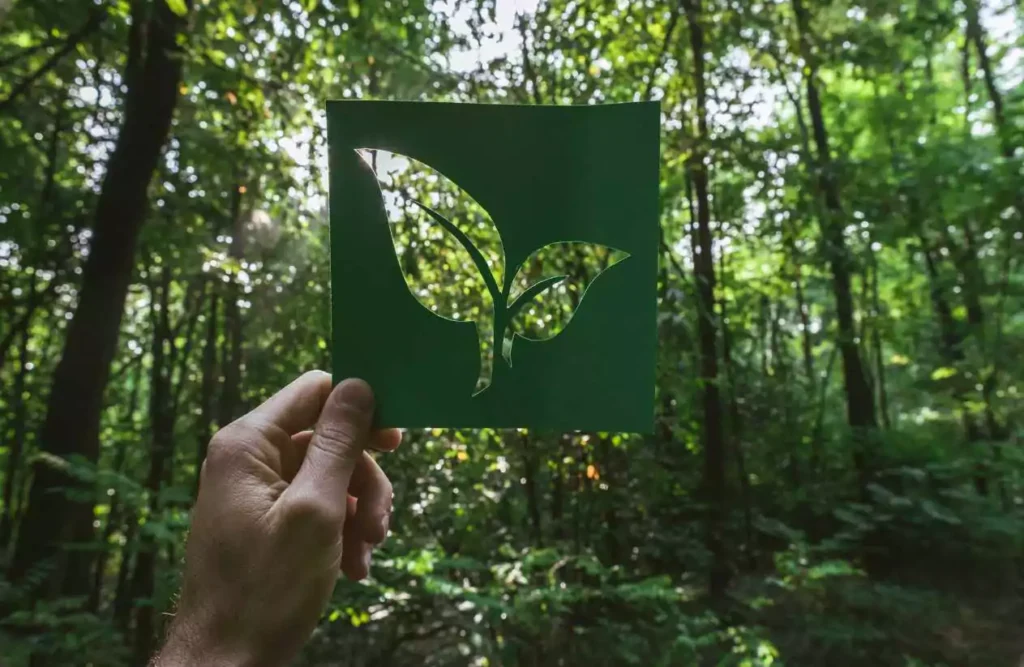Think of the last time you packed a lunch or put away leftovers. Chances are, you reached for plastic wrap, a sandwich baggie, or a similar disposable option. Sadly, these convenient items add up to a massive problem: Americans alone use around 100 billion plastic bags each year! ([Source: Statistic to be added]). This plastic waste clutters our landfills, pollutes our oceans, and harms wildlife. Even worse, chemicals from these plastics can leach into our food, potentially affecting our health.
But here’s the good news: eco-friendly food storage bags offer a solution that’s better for the planet and better for you. They’re not only reusable, reducing trash, but also often made with safer materials. Plus, over time, they can even save you money!
This guide will teach you everything you need to know about eco-friendly food storage bags. By the end, you’ll be ready to ditch the disposables for good.
Why Make the Switch to Eco-Friendly?

If you’re trying to live a more sustainable life, the kitchen is an excellent place to start. One simple change with a big impact is switching from disposable plastic storage to eco-friendly alternatives. But why bother? Well, it turns out there are a whole host of benefits beyond just feeling good about helping the planet.
Environmental Impact
- Landfill Reduction: Think about all the plastic wrap and baggies that end up in the trash after a single use. This type of plastic can take centuries to break down, cluttering our landfills and harming the environment. Reusable bags eliminate this constant stream of waste.
- Resource Conservation: Making plastic uses up precious resources like fossil fuels and water. By choosing reusable options, you’re helping to conserve these resources for future generations.
- Lower Carbon Footprint: The manufacturing, transportation, and disposal of plastic products all contribute to greenhouse gas emissions. Eco-friendly food storage can help reduce your carbon footprint and combat climate change.
Health Benefits
- Avoiding Toxins: Many plastics contain chemicals like BPA and phthalates. These chemicals have the potential to leach into your food, especially when heated or in contact with acidic foods. Eco-friendly bags are often made with safer alternatives like food-grade silicone, glass, or natural ingredients like beeswax.
Potential Cost Savings
- Initial Investment vs. Recurring Costs: Yes, reusable bags often have a higher price tag upfront. However, consider how much you currently spend on boxes of baggies, plastic wrap, and similar items each month. Those costs add up! With eco-friendly options, you make one purchase that can last for years.
Types of Eco-Friendly Food Storage Bags

The world of eco-friendly food storage is surprisingly diverse! You’ll find options to suit nearly every need, from sandwich wraps to freezer-safe containers. Let’s explore some of the most popular choices, along with their pros, cons, and what they’re best used for:
- Silicone: These reusable bags are incredibly versatile. They’re durable, can withstand freezing and even microwave temperatures, and are easy to clean. However, they can be on the pricier side. Best uses: Leftovers, freezing prepped ingredients, snacks, sous vide cooking.
- Beeswax Wraps: Coated with a blend of beeswax, tree resin, and jojoba oil, these wraps offer a natural and pliable way to store food. They mold to the shape of your food or container with the warmth of your hands. Just remember, they aren’t meant for liquids and can be sensitive to heat. Best uses: Wrapping cheese, covering bowls, sandwiches, half-cut fruits and vegetables.
- Fabric (PEVA, etc.): Reusable fabric bags often come in fun patterns and various sizes. They’re a good middle-ground in terms of price and durability (though generally less so than silicone). Best uses: Snacks, sandwiches, packing lunches, items that don’t need an airtight seal.
- Stainless Steel Containers: The ultimate in durability! Stainless steel is airtight and won’t break if dropped. The downside is a higher weight and lack of flexibility. Best uses: Packing lunches, storing leftovers, taking food on the go.
- Glass Containers: A classic, versatile choice. Glass is microwave-safe, oven-safe (if suitable type), and offers clear visibility. The main drawback is the potential to break. Best uses: Storing leftovers, meal prep, baking dishes.
How to Choose the Best Eco-Friendly Bags for You

With all the great options out there, how do you know which type of eco-friendly bag is right for you? It all comes down to a few key considerations. Let’s break them down:
- Consider your needs: Think about the types of food you most often store. Do you need freezer-safe bags? Containers for hot leftovers? Sandwich wraps? Snack pouches? Choose options that match your most common uses.
- Budget: Eco-friendly food storage can range in price. Generally, here’s a ranking from least to most expensive:
- Fabric bags
- Beeswax wraps
- Glass containers
- Stainless steel containers
- Silicone bags
- Ease of cleaning: Are you a dishwasher devotee or do you hand-wash most things? Some materials, like silicone and glass, are usually dishwasher-safe, while others require hand-washing. Factor this into your decision.
- Durability: How long do you want the bags or containers to last? Stainless steel and glass will likely outlive other options, but with care, silicone and beeswax wraps can also last for years.
Where to Find the Best Eco-Friendly Food Storage Bags

Ready to make the switch? Luckily, finding eco-friendly food storage is easier than ever! Here are a few of the best places to look:
- Online retailers specializing in eco-products: These stores curate a wide selection, often with detailed product information. Some popular examples include:
- EarthHero
- Package Free Shop
- Life Without Plastic
- Major online marketplaces: Sites like Amazon and Etsy offer tons of options. Use search terms like “reusable food storage,” “beeswax wraps,” etc., and filter by material to find what you need.
- Local shops focused on sustainability: Supporting your local community is awesome! Investigate these potential sources:
- Zero-Waste Stores: These shops may carry a curated range of storage bags.
- Farmer’s Markets: Look for vendors selling beeswax wraps or handmade reusable bags.
- Health Food Stores: Some carry eco-friendly kitchen products alongside groceries.
- Kitchenware Shops: Certain stores might have a dedicated section for sustainable goods.
Bonus Tip: Don’t be afraid to ask! Even if your favorite shop doesn’t currently carry eco-friendly storage, letting them know you’re interested could encourage them to start stocking them!
Caring for Your Eco-Friendly Food Storage
You’ve invested in eco-friendly food storage – now you want it to last! Proper care will ensure your bags and containers stay in good shape for years to come. Here’s a breakdown of care instructions for the most common materials:
- Silicone:
- Most silicone bags are dishwasher safe (top rack is best to ensure thorough cleaning).
- For stubborn stains, a paste of baking soda and water can help. Leave it on for a while, then scrub and rinse.
- To avoid grease stains, rinse oily bags right away before putting them in the dishwasher.
- Beeswax Wraps:
- Hand wash with cool water and mild dish soap. Avoid hot water.
- Air dry thoroughly. Store rolled or folded in a cool, dry place.
- With proper care, beeswax wraps can last up to a year!
- Fabric Bags:
- Follow the specific care instructions on the tag. Some might be machine washable.
- Air dry to prevent shrinkage or damage.
- Stainless Steel:
- Dishwasher safe and super easy to clean.
- To remove lingering odors, a soak in diluted vinegar can help.
- Glass:
- Microwave and dishwasher safe (check if the specific container is oven-safe).
- To prevent chips and breaks, handle with care, and don’t expose to sudden temperature changes.
Tips for Stain Avoidance (especially with silicone):
- Rinse bags used for oily or greasy foods as soon as possible.
- Avoid storing brightly colored foods (tomato sauce, turmeric, etc.) in silicone for extended periods.
- Try turning silicone bags inside out before placing them in the dishwasher for a deeper clean.
Conclusion
By switching to eco-friendly food storage bags, you’re making a powerful choice. You’re shrinking your landfill footprint, reducing your reliance on plastics, and potentially protecting your health. It’s a win for the planet and a win for you!
Remember, even small changes add up. Every time you reach for a reusable bag instead of a disposable one, you’re making a difference. Your individual actions contribute to a healthier world for all.
So, why not give it a try? Choose one type of eco-friendly bag: a versatile silicone pouch, a beeswax wrap for your cheese, or a fun fabric bag for snacks. See how it fits into your routine and how good it feels to be part of the solution. Every step counts!


